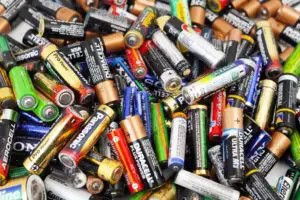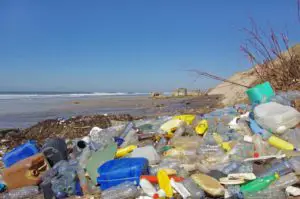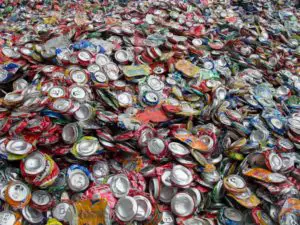 Taking computer recycling seriously is very important if you want to make your contribution towards a greener planet. There are currently no federal regulations on e-waste recycling, so individual states have to come up with their own regulations. Only about half of the states in the US have so far come up with such regulations. However, regardless of which state you live in, it is a matter of responsibility to find out the available computer recycling options.
Taking computer recycling seriously is very important if you want to make your contribution towards a greener planet. There are currently no federal regulations on e-waste recycling, so individual states have to come up with their own regulations. Only about half of the states in the US have so far come up with such regulations. However, regardless of which state you live in, it is a matter of responsibility to find out the available computer recycling options.
Where Computers Can be Recycled Near You
There are different organizations that have initiated recycling programs across North America. If you check with recyclingcenternear.me you can easily find out the nearest recycling centers or options available for you. Even some manufacturers of computers and other electronics may have their own programs, or partner with third-party organizations to take back used machines from their customers for recycling. So you should check with your computer manufacturer if they have allowed customers any recycling options. Earth911 partners with Dell among other computer manufacturers as well as organizations involved in more recycling programs across the country. One of their partners, call2recycle.org, is also another leader in the computer recycling sector. They mainly take care of battery recycling and you can check on their website too to find a drop-off location near you. There is a large network of organizations involved in the recycling business and wherever you live should still be able find an option for recycling computers.Why You Should Have Computers Recycled
Throwing away a used computer or any part of the computer to the trash to end up in a landfill is not an option. The circuit boards and other parts often contain toxic materials such as lead, chromium, beryllium, cadmium, mercury, brominated flame retardants and much more. That makes e-waste from computers a great environmental concern. Throwing the e-waste in trash where it mixes with regular waste is a terrible decision. The normal waste management systems that most cities use do not take care of e-waste. When computer parts end up burned, toxic materials like lead, mercury, copper and others leach into the soil and may easily end up in food chains eventually harming humans.Do Not Attempt Recycling at Home
Recycling computers yourself may also not be a good idea because proper systems and recycling processes are required to avoid toxic effects. Some people burn parts of computers including PVC materials in order to extract metals like copper. In addition to contaminating the soil, such processes leave people exposed to extremely toxic gases released in the air.Get Paid Cash For Recycling
With most computer recycling programs, you can actually get paid some cash for your old computers. That depends on whether your old machine still has any useful components that may be of value if reused. Different recycling programs may have their own rules determining when they can pay cash to recycle. Some manufacturers will either pay cash for the old computers they take back or allow trade-ins to benefit their customers. Whichever option best applies to you, getting your old computer junk recycled instead of using valuable space at home or office is definitely a great choice.Originally Published Here: How To Recycle Old Computers
 We live in a wireless world that runs on batteries, most of which contain toxic metals that can be extremely harmful to the environment. Only a very small percentage of alkaline batteries get recycled after use. At least for the car batteries that contain lead and acid, the recycling rate in the US is over 90%. That has been possible because manufacturers of such batteries have initiated the efforts to recycle them. However, for most of the smaller batteries commonly used in households, many efforts in creating awareness for recycling are needed. Don’t just throw away batteries after use Lead, cadmium, mercury, cobalt and other toxic materials contained in different types of batteries should never find their way to the landfills. If that happens, they will cause soil contamination and finally find their way into the water or food that we end up consuming. The toxic effects on humans include diseases like cancer, respiratory and kidney problems. So if you are kind to our planet should never throw batteries into the trash. Your city’s municipal solid waste management processes cannot take care of that. So all the batteries you have used in various devices at home should go to a recycling center near you.
We live in a wireless world that runs on batteries, most of which contain toxic metals that can be extremely harmful to the environment. Only a very small percentage of alkaline batteries get recycled after use. At least for the car batteries that contain lead and acid, the recycling rate in the US is over 90%. That has been possible because manufacturers of such batteries have initiated the efforts to recycle them. However, for most of the smaller batteries commonly used in households, many efforts in creating awareness for recycling are needed. Don’t just throw away batteries after use Lead, cadmium, mercury, cobalt and other toxic materials contained in different types of batteries should never find their way to the landfills. If that happens, they will cause soil contamination and finally find their way into the water or food that we end up consuming. The toxic effects on humans include diseases like cancer, respiratory and kidney problems. So if you are kind to our planet should never throw batteries into the trash. Your city’s municipal solid waste management processes cannot take care of that. So all the batteries you have used in various devices at home should go to a recycling center near you. Plastic is literally everywhere on our planet. It has become a vital part of our lives, which are mostly driven by convenience. However, that convenience comes at a price. Thanks to its resiliency, nearly every piece of plastic ever made still exists today. A very significant amount of it is thrown away and ends up in landfills, and sadly in the ocean. It is estimated that there are some five trillion pieces of plastic in the world’s oceans. By 2050, it is predicted that there will be more plastic, by weight, in the ocean than fish. Every year, around 8 million tons of plastic finds its way to the sea. In the U.S. alone, nearly 2.5 million plastic bottles are used every hour. It gets worse from there. All this plastic ends up swirling around in the ocean creating immensely large trash islands. One of the world’s largest is known as the Great Pacific Garbage Patch. While it’s difficult to get an actual size measurement, some estimates have it equal to the size of Texas, roughly 700,000 square kilometers. This area has one of the highest levels of plastic particulate caused by plastic degradation. Essentially, the plastic degrades and disintegrates into pieces so small that it becomes small enough to be ingested by aquatic organisms. It then becomes part of the food chain. There is actually growing evidence that fish may prefer eating plastic to food. There is also evidence that plastic is harmful to humans. Plastic’s main ingredient, styrene, is most likely a human carcinogen. There’s no evidence just yet that says the plastic that we eat in fish directly affects human health, but it is certainly getting there. Some of these plastic particles end up in the stomachs of marine animals like albatrosses and sea turtles. Many of the former lose approximately 1/3 of their chicks. Many of them die due to their eating plastic that is fed to them, when it is mistaken as food by their parents. It is estimated that every year, nearly five tons of debris gets fed to albatross chicks. Microscopic debris can also be eaten by jellyfish, which are then eaten by fish. It is a deathly cycle that doesn’t show signs of stopping anytime soon. With a life span of over 500 years, plastic isn’t going anywhere. In America, 50% of what gets put into the
Plastic is literally everywhere on our planet. It has become a vital part of our lives, which are mostly driven by convenience. However, that convenience comes at a price. Thanks to its resiliency, nearly every piece of plastic ever made still exists today. A very significant amount of it is thrown away and ends up in landfills, and sadly in the ocean. It is estimated that there are some five trillion pieces of plastic in the world’s oceans. By 2050, it is predicted that there will be more plastic, by weight, in the ocean than fish. Every year, around 8 million tons of plastic finds its way to the sea. In the U.S. alone, nearly 2.5 million plastic bottles are used every hour. It gets worse from there. All this plastic ends up swirling around in the ocean creating immensely large trash islands. One of the world’s largest is known as the Great Pacific Garbage Patch. While it’s difficult to get an actual size measurement, some estimates have it equal to the size of Texas, roughly 700,000 square kilometers. This area has one of the highest levels of plastic particulate caused by plastic degradation. Essentially, the plastic degrades and disintegrates into pieces so small that it becomes small enough to be ingested by aquatic organisms. It then becomes part of the food chain. There is actually growing evidence that fish may prefer eating plastic to food. There is also evidence that plastic is harmful to humans. Plastic’s main ingredient, styrene, is most likely a human carcinogen. There’s no evidence just yet that says the plastic that we eat in fish directly affects human health, but it is certainly getting there. Some of these plastic particles end up in the stomachs of marine animals like albatrosses and sea turtles. Many of the former lose approximately 1/3 of their chicks. Many of them die due to their eating plastic that is fed to them, when it is mistaken as food by their parents. It is estimated that every year, nearly five tons of debris gets fed to albatross chicks. Microscopic debris can also be eaten by jellyfish, which are then eaten by fish. It is a deathly cycle that doesn’t show signs of stopping anytime soon. With a life span of over 500 years, plastic isn’t going anywhere. In America, 50% of what gets put into the  Who doesn’t have a bunch of aluminum cans lying around their house? Since their introduction to consumers in 1959, they have steadily grown to be the most sustainable drink container. You can quickly chill them, stack them, and hopefully, recycle them. Since they are the most recycled beverage holder, and contain around 70% recycled material, they are the most valuable item in your recycling bin. Merchandisers love them because they offer long-term preservation benefits. Aluminum cans create 100% protection against light, moisture and oxygen. They are packaging that is tamper-resistant, which helps to put the consumer’s mind at ease. Not only are foods and drinks packaged this way, but also paint and aerosol products. There are literally thousands of products that come in aluminum cans, and they should all be turned in to an
Who doesn’t have a bunch of aluminum cans lying around their house? Since their introduction to consumers in 1959, they have steadily grown to be the most sustainable drink container. You can quickly chill them, stack them, and hopefully, recycle them. Since they are the most recycled beverage holder, and contain around 70% recycled material, they are the most valuable item in your recycling bin. Merchandisers love them because they offer long-term preservation benefits. Aluminum cans create 100% protection against light, moisture and oxygen. They are packaging that is tamper-resistant, which helps to put the consumer’s mind at ease. Not only are foods and drinks packaged this way, but also paint and aerosol products. There are literally thousands of products that come in aluminum cans, and they should all be turned in to an